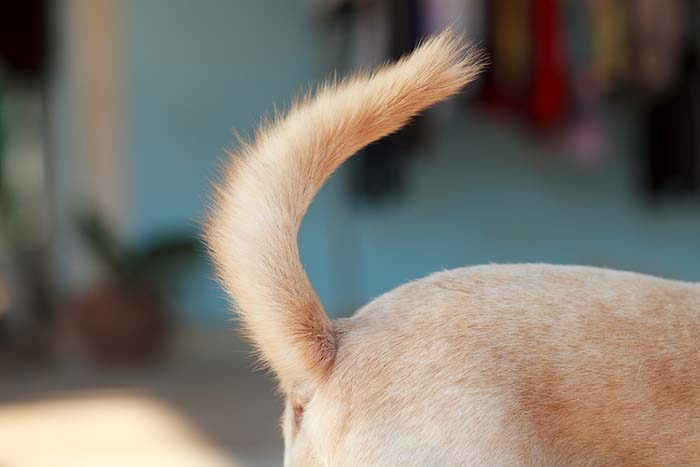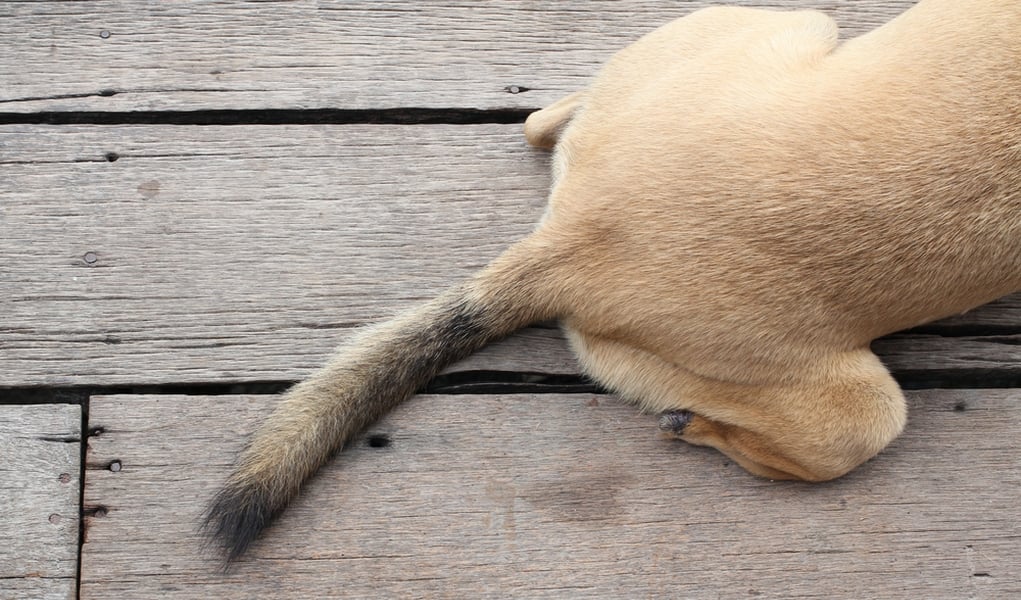You can learn a lot about your dog by keeping an eye on his tail. Dog tails wag and droop. They move around a lot, so is a dog's tail a bone? Can dogs break their tail?
Dog tails have actually serve a meaningful purpose. First and foremost, their tails help them balance. When your dog moves around, he uses his tail like the rudder of a boat.
Watch your dog when he's wandering around your yard or running around the dog park. When he wants to speed up, his tail will go out straight or point downward slightly. When he wants to slow down, he will put his tail up.
If you watch your pet run around trees or obstacles in your yard, you'll see him move his tail back and forth to help his balance.
The tail can also be used to swat away insects and control his odor. If your dog wants to increase or decrease the odors that he is omitting, he can maneuver his tail to help him do so.
Does this mean that dogs with docked cannot balance properly? No. Although a dog's tail serves many purposes, dogs with docked tails learn to adjust.
If a dog is born without a tail, he learns to cope from the beginning. If your dog has to have his tail amputated for some reason, he will recover with almost no noticeable effects. He will learn to readjust, and his balance shouldn’t be affected long term.
Is A Dog's Tail a Bone?
Can dogs break their tail?

Is a dog’s tail a bone? The simple answer is, yes it is.
A dog's tail wiggles all around. If you feel it, the end is more flexible that an arm or a leg, so it can't be a bone…or can it?
It is easy to mistake the tail for a muscle or long piece of cartilage. However, a dog's tail is actually made up of a string of small bones enclosed in muscle. Similar to the vertebrae in the spine, the muscles can control the movement of the tail.
In fact, the canine is an extension of his spine. The vertebrae in the tail are bigger at the base and get smaller as you move toward the tip.
There are soft discs that cushion the spaces between the vertebrae. This is what allows the tail to be so flexible.
There are numerous muscles and nerves in the tail that help to facilitate the movement, as well. As you can see, the tail structure of a dog is a lot more complex than most people think. For this reason, the tail can become injured easily, and it's important to take proper care of your pet's tail.
Tail injuries and what to do about them
Cuts & Scrapes
Simple scrapes and small cuts can happen when your dog wags their tail and hits something or drags their tail across a rough surface. Typically, these injuries aren't much to worry about.
If the fur has been rubbed off the tail and the skin is exposed, make sure to clean the area with mild soap and warm water. Apply an antibiotic cream to the area, and wrap the tail with self-adhering wrap to prevent your dog from accessing the area.
Don't wrap the tail too tightly, or it will restrict blood flow. You should change the bandage every day until it has fully healed. If necessary, you can use an e-collar to prevent your dog from licking/chewing the area or removing the bandage.
If the cut is deep and there is excessive bleeding, call your veterinarian immediately. Wrap the tail with a clean towel or gauze and hold pressure on the wound until you get medical assistance.
If there is muscle damage, more serious medical treatment may be required. Your veterinarian will also treat the wound for infection, and may send you home with antibiotics to ensure that infection doesn't occur as the wound heals.
SIMILAR: How To Clean A Dog Wound

Happy tail
Don't let the name fool you. Happy tail is not a good thing. If your dog is constantly wagging his tail, it's likely that he often hits it against solid objects.
Constant whacking on end tables, walls, furniture and trees can be very bad for your pet's tail. When your pet causes injury to his tail, but doesn't stop his incessant wagging, it can do serious damage to his tail.
Depending on the initial injury, happy tail can be very painful. In this situation, it is best to call your vet. They will evaluate the injury, help to treat the original problem, and assist you in creating a plan to heal the tail fully.
In some cases, the dog may reduce his wagging after the wound has been treated and he has been given antibiotics and pain medication. During the healing process, the dog may not feel as energetic, so the wagging will naturally decrease.
In other cases, the wagging may continue even though your pet is in pain. Your veterinarian may show you how to wrap your pet's tail to prevent wagging. You'll need to be sure to wrap it loosely, so you don't prevent blood circulation.
Happy tail injuries are usually not severe, but they do require proper treatment to heal correctly. In severe cases or instances when the injuries happen repetitively, a veterinarian may recommend docking the tail.
This only happens in extreme cases, so don't worry. Your veterinarian would only recommend this as a last resort.
Limber tail
Similar to happy tail, limber tail is a muscle condition that is caused by overexertion of the tail. If your dog has limber tail, the base of his tail will be painful and/or sensitive to touch.
As the name suggests, a surefire sign of this condition is that your dog's tail will become limp. Treatment typically includes rest and possibly some medication to reduce swelling.
It is best to call your veterinarian if you suspect your dog is suffering from limber tail. While he may just need some rest, it could also be a symptom of a more serious problem like a fracture or nerve damage.
Nerve damage
If your dog's tail is pulled or stretched strenuously, it could tear nerves in the area. If your dog fractures or breaks his tail near the base, it could actually sever the nerves.
Tail pull injuries can also cause damage to nerves higher up in the spinal cord. This could result in the inability to control urination and defecation.
Nerve damage is a serious problem that could lead to your dog losing the ability to move his tail or incontinence. If you believe that your dog has suffered a tail pull injury, be sure to consult your veterinarian immediately.
Can dogs break their tail?
Yes, like any other bones, the vertebrae in your dog's tail can break. This usually happens if a dog takes a hard fall from a high piece of furniture, porch, etc… It could also happen if your dog's tail gets caught in a door or under a rocking chair.
The location of the break will have a large effect on the treatment required. If it is located at the tip of the tail, it usually heals well without any treatment. Injuries near the base of the tail may involve nerve damage, which is much more serious.
Again, if you believe that your dog has fractured or broken his tail, do not wait to seek veterinary care. It won't heal properly on its own, and your dog will suffer in pain while waiting.
READ NEXT: 25 Dog Health Symptoms That You Must Address Right Away












